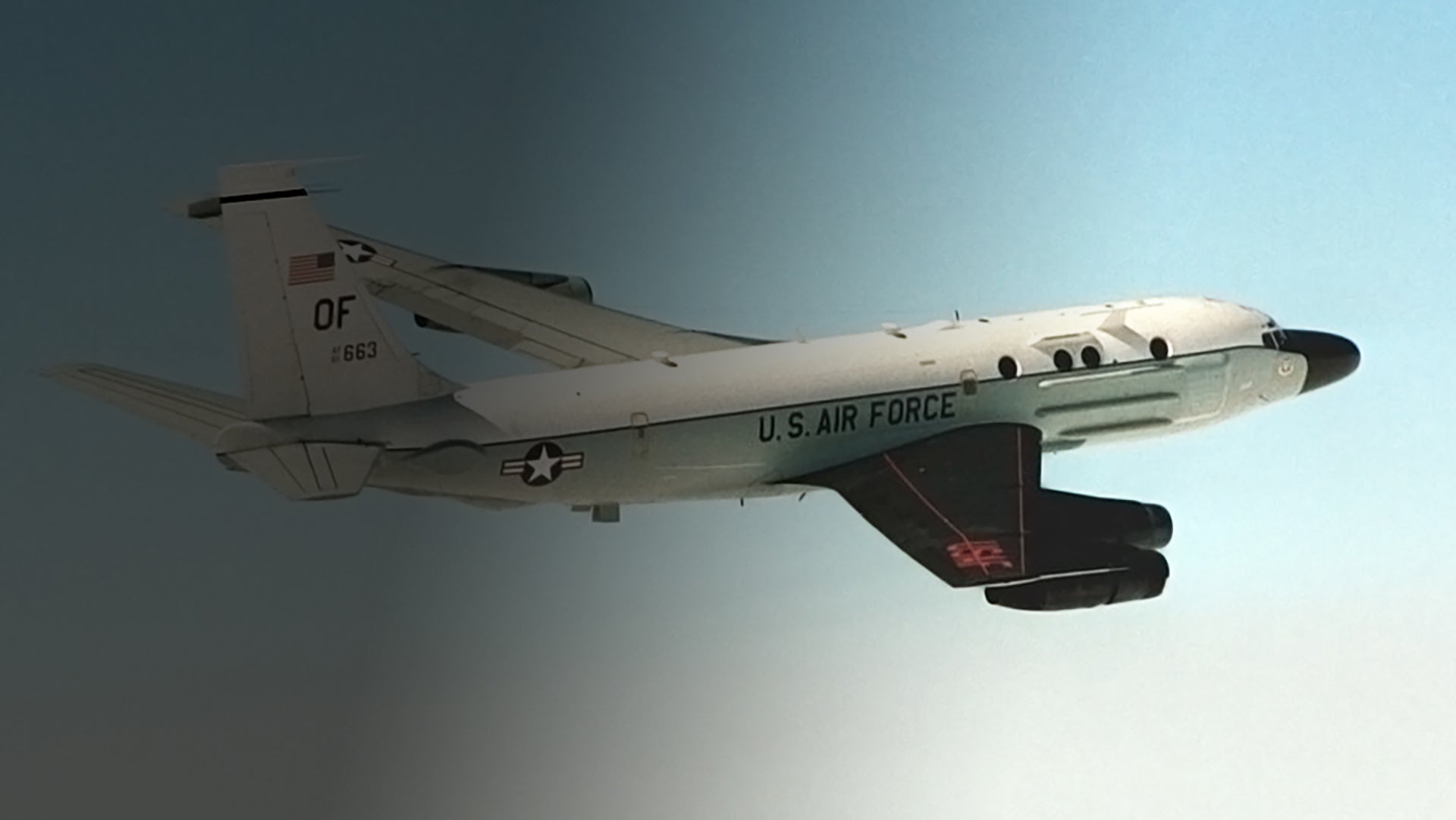Veteran Air Force pilot Robert Hopkins, who is also the author of one of my favorite reference books, The Boeing KC-135 Stratotanker: More Than a Tanker, flew RC-135S Cobra Ball missile tracking planes during the twilight of the Cold War. Cobra Ball was one of America’s most important intelligence-gathering assets as it collected high-fidelity data on adversary ballistic missile tests. The flights were critical to U.S. national security with many missions originating out of the highly remote and windswept Shemya Air Force Base in the Aleutian Island chain and aimed at spying on Russian ballistic missile test launches.
On two of these flights, while monitoring tests of Russia’s SS-20 Saber intermediate-range ballistic missile, Hopkins and his copilot experienced something incredibly bizarre. It was a phenomenon that ended up drawing extreme interest from America’s intelligence community, which thought the RC-135S had encountered a new secret weapon that could alter the strategic balance between the United States and the Soviet Union.
Robert Hopkins has been kind enough to share his recollections of encountering the aptly named ‘Dome Of Light’ with us. The following account is in his own words:
“Sometime during late 1988, most likely October or November, my crew from the 24th Strategic Reconnaissance Squadron, 6th Strategic Reconnaissance Wing at Eielson AFB, Alaska, was at Shemya AFB, Alaska, for a routine two-week deployment. During a sortie in the sensitive area east of the Kamchatka Peninsula near the USSR, we were notified that the Soviets had launched an SS-20 Saber (RDS-10 Pioneer) missile toward the Kura Test Range at Klyuchi.
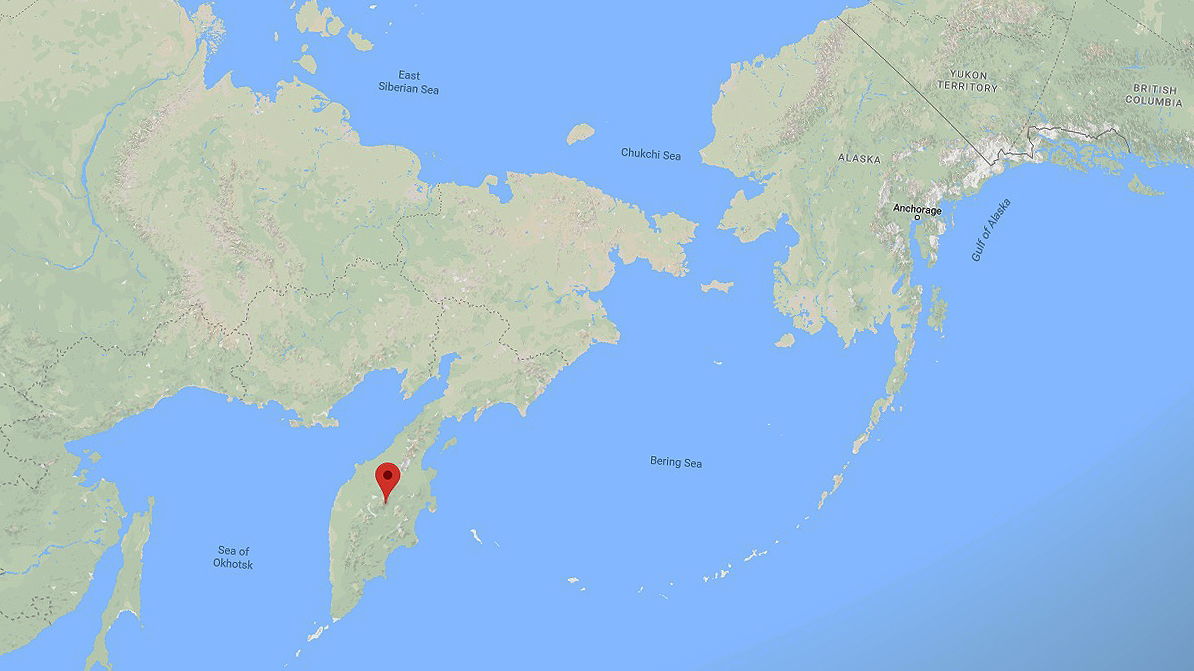
This was part of the “shoot-to-destruction” provision of the 1987 Intermediate Nuclear Forces (INF) Treaty between the US and the Soviet Union. This allowed for the destruction of 72 of 650 of the now-prohibited intermediate-range ballistic missiles (IRBMs) by launching them from a known test facility to a known impact site with unimpeded observation by national technical means (NTM) of verification. In this case, the NTM was the RC-135S Cobra Ball flown by my crew.

Using a variety of optical and telemetry sensors, the RC-135S collected measurement and signature intelligence (MASINT) and telemetry intelligence (TELINT) used to verify compliance with international arms agreements and to assess the maturity and development of foreign ballistic missile systems.
As our crew prepared for the re-entry of the SS-20’s three re-entry vehicles (RVs), we climbed to our prescribed collection altitude and began our timing track to ensure that the right side of the airplane—where all the sensors were located—was pointed toward the re-entry event to the west of our orbit (later versions of the Cobra Ball are “ambidextrous” and can collect from either side).
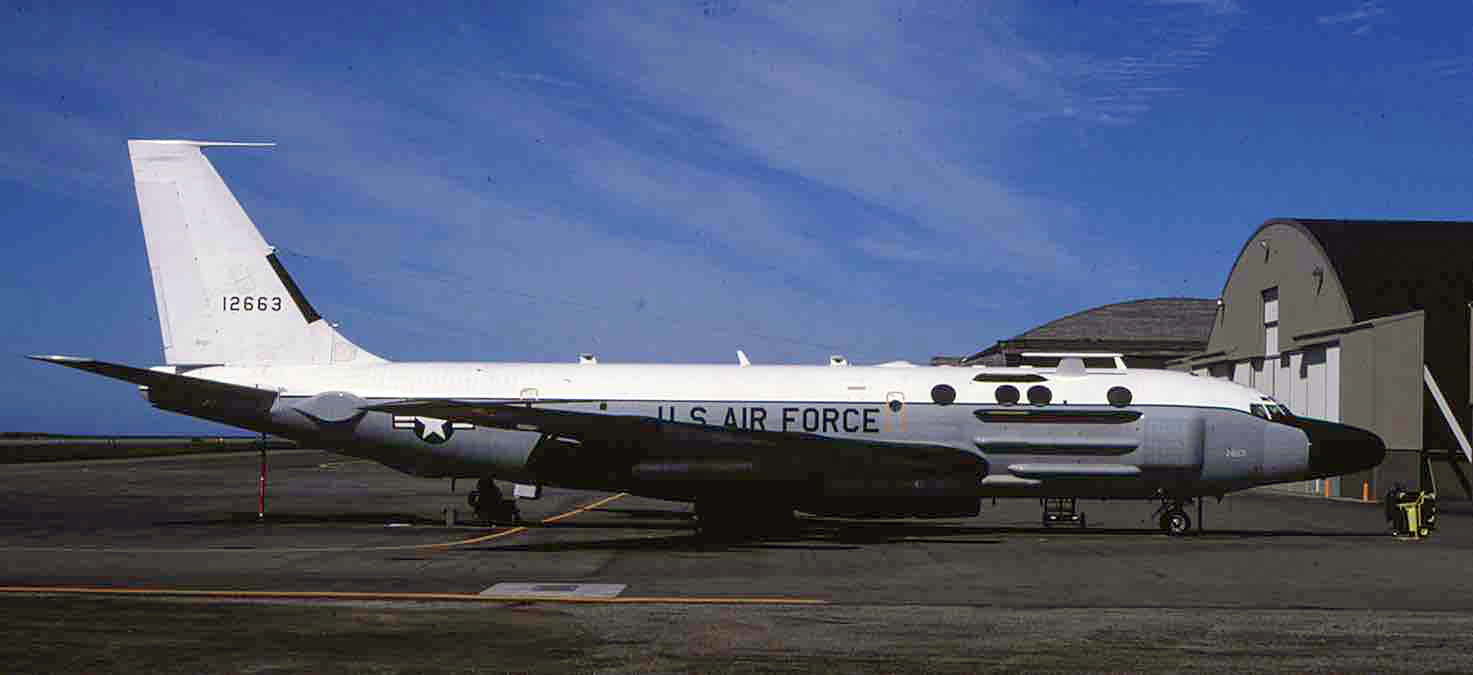
The autopilot was connected to the Litton LN-20 stellar-inertial-Doppler system for precise positioning (within six feet) of the airplane, and the second navigator used traditional plotting to back up the LN-20, as well as confirm our presence in international airspace at least 40nm, well beyond the Soviet territorial limit of 12nm.
The stars were out that night and I don’t recall any moonlight, so we anticipated a nice light show by the RVs as they re-entered the atmosphere. As with any “take,” or collection, there was a general buzz of excitement as the back-end crew verified that their sensors and recorders were fully operational and ready for what would be less than a minute of valuable intelligence.

The other pilot and I looked out ahead and to the left to clear for any potential conflicting traffic. While on an operational sortie the Cobra Ball did not file a flight plan, use its transponder/identification-friend or foe (IFF), or its navigation lights (although its storied black right wing supposedly prevented glare and the nav lights from affecting the sensors, by this time the sensors were able to collect without this adverse effect). Instead, the Cobra Ball flew using the International Civil Aviation Organization (ICAO) “due regard” procedures where the pilots were responsible for the safety of our aircraft and any others it might encounter.
As we looked for traffic, we noticed what appeared to be a translucent, milky white wall moving from the left, over the USSR, to the right, toward the Northern Pacific Ocean. It covered the entire sky from ground level to as far up as we could see looking out the front windows of the airplane. It moved very quickly—far faster than crossing airplane traffic—and rapidly approached us. The wall of light passed across our flight path and then continued eastward, leaving the empty and dark night sky in its wake. Our programmed turn time arrived and we began our bank to the left to collect on the RVs. Once we rolled out southbound the wall of light was no longer visible to the east.
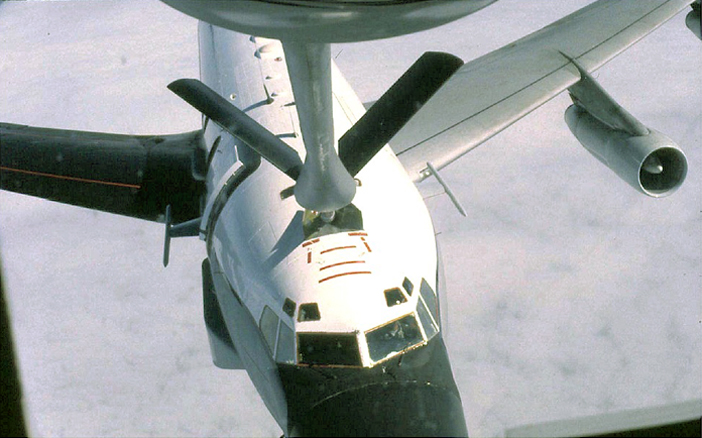
After the mission, the other pilot and I discussed what we had seen and could offer no explanation. As we had both seen it, we concluded that it was not a hallucination and was likely some kind of auroral event neither of us had ever seen, despite their common presence at the high latitudes where we routinely operated. Interestingly enough, the same pilot and I saw the phenomenon again, behaving in the same fashion and, coincidentally, also prior to the collection for an SS-20 launch.
By this time there was official interest in this event, which had now acquired the name “Dome Of Light.” This accurately described its appearance as a flash of light that began at the SS-20 launch site and then radiated outward in all directions at high speed. Guesses as to the velocity of the Dome Of Light were determined by the time it took the SS-20 to travel from the launch site at either Drovyanaya or Kansk to Klyuchi. This yielded a back-of-the envelope speed around 6,200mph!
Scientists at the Air Force’s Foreign Technology Division (FTD) at Wright-Patterson AFB, Ohio, could not explain the origin or purpose (if there was one) for the Dome Of Light. Some concluded it was caused by special fuel used in the first stage of the SS-20. Others argued that it was something external to the SS-20’s propulsion system (or possibly a part of its transporter-erector-launcher or TEL) that provided an initial flash of light designed to temporarily blind US defense warning satellites that detected foreign missile launches or a pulse that would interfere with incoming warheads. FTD placed the highest collection priority on SS-20 launches and even planned one mission over the Sea of Okhotsk to attempt collection from “behind” the dome as it passed by, but this produced no meaningful results.
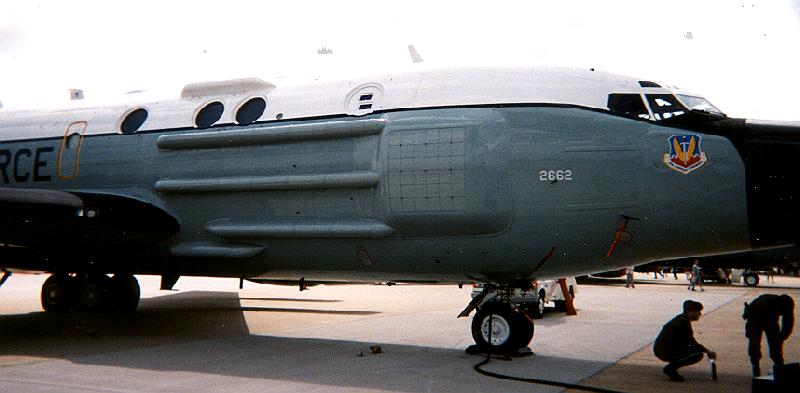
While researching the section on aerial intelligence related to ballistic missile launches for the first volume of my 2016 book Spyflights and Overflights: US Strategic Aerial Reconnaissance, vol. 1, 1945-1960, I came across two references to the Dome Of Light, but neither had any scientific or military explanation beyond what we had been told at the time. The best I have been able to determine was that in the post-Soviet ‘glasnost’ world, the Russians knew what the Dome Of Light was, but were not saying. With research underway in anticipation of the 2021 release of Spyflights vol. 2, 1960-1992, I would really like to determine what the Dome Of Light was all about.”
What Hopkins describes is truly fascinating and the fact that there still doesn’t appear to be an official answer as to what caused this phenomenon and why exactly it existed makes the story all the more intriguing. We did some abbreviated searching of our own and found a couple unique mentions of such a capability. Keep in mind, when we say “Dome Of Light” we don’t mean the localized and often quite pretty looking trails left behind from a rocket’s boosters. This is an established and well-understood byproduct of launches under certain conditions and they don’t have similar characteristics as what Hopkins describes in his first-hand account.
In the case of the Dome of Light, three sources, in particular, seem to allude to some sort of weapon system that is meant to foil American surveillance and/or anti-ballistic missile defenses, which were an incredibly contentious topic in the ‘Star Wars’ era of the Reagan administration.
A Los Angeles Times piece from January 24th, 1988 talks about the Intermediate-range Nuclear Forces treaty—coincidentally, the same one that was just shredded—and the issues surrounding Russia’s compliance with it. The article mentions specifically a Dome Of Light system used to mask a first strike launch, presumably at least in part by blinding America’s space-based infrared early warning satellites:
Helms [Then-North Carolina Senator Jesse Helms] went on to dispute an unnamed “high White House official” for saying in defense of the new treaty that the Soviets would gain “no militarily significant advantages” through cheating, possibly by hiding SS-20 missiles.
“Unclassified estimates for years have assumed that the SS-20 force was close to and even over 1,000,” the analysis said. “Yet the Soviets in the Memorandum of Understanding accompanying the INF Treaty have declared that they have only 650. . . . If U.S. intelligence is correct, then the Soviets are already violating the treaty obligations and we can assume they intend to cheat on a massive scale.”
Hidden SS-20s could be used for a “surprise party,” Helms said, a sudden disclosure of nuclear force aimed at coercion of the NATO allies; to carry chemical or biological warfare agents, or to create a “dome of light” masking a nuclear first strike.
A Helms aide, speaking on condition that he not be identified, declared that there is “a sea change under way in the Senate, enough that the treaty may be dead on arrival.”
An issue of the Executive Intelligence Review dated just a month later also mentions the Dome Of Light capability by name, stating:
There are at least three uses for a covert fleet of SS-20s [each of which] could have a tragic, catastrophic effect upon the United States and NATO.
1. The Surprise Party: a sudden revelation of covert, massive, over-kill capability to force the United States and NATO to accept decisive geostrategic changes.
2. Chemical and Bacteriologial [sic; Bacteriological] Warfare: the MIRVed warhead is ideal for the strategic dispersal of chemical, bacteriological, and biological agents from a distance that would not contaminate Soviet troops.
3. The “Dome of Light’: a temporary ABM effect, already tested, which could ‘shield the launch of a first strike.
Dome Of Light comes up again, this time in relation to legendary scientist and inventor Nikola Tesla. In a story that first appeared in Omni Magazine in March of 1988 there is a direct reference to the possibility that Russia had used Tesla’s ideas to create a Dome Of Light weapon system:
As extreme as some of these ideas seem, at least they are confined to the realm of the possible. But among those trying to revive Tesla’s ideas are some whose claims stretch the borders of the credible. A typical member of the radical fringe is Tom Bearden, a retired lieutenant colonel who works as a weapons analyst for an aerospace company. For years he has been collecting reports of unexplained explosions such as a 1976 sighting in Afghanistan of “gigantic, expanding spheres of light” emanating from “deep within the Soviet Union.” Bearden claims there has been a “Soviet weaponization” of one of Tesla’s pet notions, which he himself has dubbed “scalar electronics.” By combining and focusing electromagnetic and gravity waves, he says, one can make incredibly potent weapons. He is certain this is what Nikita Khrushchev was referring to 25 years ago when he announced the Russians had a fantastic weapon that could destroy life on Earth.
Today, Bearden says, the Soviets have a whole arsenal of scalar armaments. These include a scalar howitzer, which is supposed to have generated a series of loud booms off the east coast of the United States in the late Seventies, and something resembling an ultrapowerful laser, which Bearden holds responsible for the temporary blinding of several American satellites. He’s among a number who claim that an enormous mushroom cloud and dome of light seen over the Pacific in 1984 by the crews of three commercial airliners was not the aftermath of a Soviet rocket launch but was made by something else — perhaps a scalar weapons test.
Bearden’s ideas have attracted little interest and less sympathy from knowledgeable mainstream scientists. “Yes, I wasted an evening listening to him once,” admits physicist John Rather, a pioneer star-wars researcher. “His physics is pure nonsense. And so are his ideas about the Russians.”
The plausibility of what is mentioned in the Omni article isn’t as important as the fact that a weapon of similar capability was being openly discussed during the same year that Hopkins experienced the Dome Of Light firsthand and was aware of the U.S. intelligence community’s high interest in its possible existence.
Beyond all of this being of major historical significance, as it basically points to Russia having, or at least attempting to employ some sort of missile defense countermeasure superweapon during the last years of the Cold War, it also has great relevance today as we enter into a new Cold War of sorts.
Today, Russia is just as sensitive toward America’s push for advanced missile shield as it was in the late 1980s. With major treaties disintegrating and new weapons entering into the fray, including hypersonic ones that fly at extreme velocities within the earth’s atmosphere, Russia is surely very interested in being able to blind America’s space-based early warning and missile tracking layer.
The Pentagon is now working hard at adding to this layer in significant ways, including creating a sensor constellation that can track missiles during their midcourse phase of flight. In addition, actually weaponizing space with American anti-missile capabilities is looking more likely to become a reality in the not so distant future. Maybe all this will spur Russia to revisit their Dome Of Light concept once again if it did indeed exist some three decades ago. Russia already seems to be quite comfortable with pursuing super weapons as a way to attempt to level the strategic playing field with the United States. Dome Of Light could just be added to the list if it is indeed a viable concept.
In the end, with Hopkins’ rich account of his encounters with the Dome Of Light while commanding RC-135S Cobra Ball missions to track SS-20 launches, it seems like Russia did indeed at least test such an exotic countermeasure system. How it worked and if it actually was effective in any way remain a mystery that we think is well worth looking in to on a deeper level.
We will be sure to let you know if we find out more about Russia’s mysterious Dome Of Light as our investigation unfolds.
Contact the author: Tyler@thedrive.com
